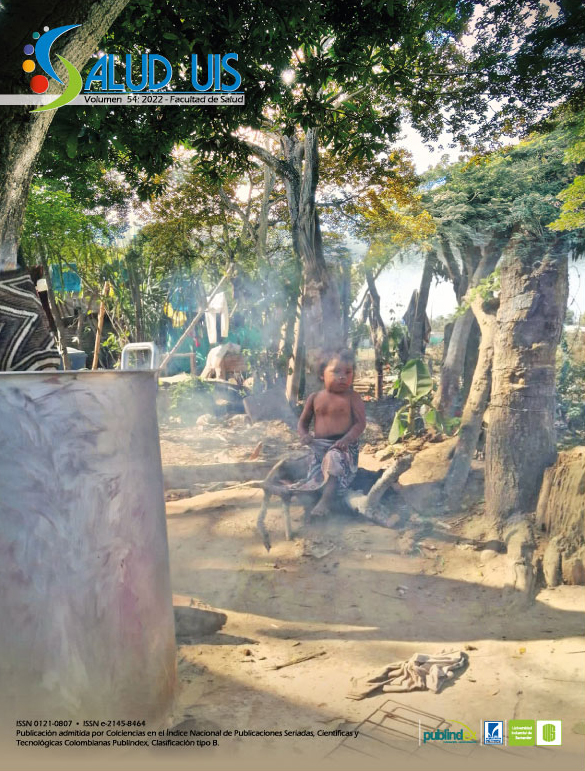Abstract
Introduction: Traditionally, the teaching of the brachial plexus and nerves of the upper limb starts from theory, followed by a recognition practice in the amphitheater. Objetive: To propose a pedagogical strategy for the teaching and learning of this topic that allows the understanding of the relationship between nerve roots, the formation of trunks, fascicles and terminal nerves. Materials and method: To understand the anatomy of the brachial plexus, an in-depth reading of the classic human anatomy textbooks was initially performed; applications with 3D images were reviewed to facilitate spatial location; drawings of the brachial plexus were made and, through virtual meetings, it was decided to create a structured story with introduction, climax and conclusion, which would allow an analogy between everyday life and the brachial plexus, entitled “A story in the brachial plexus”. Afterwards, the Procreate program from Apple was used to illustrate the characters according to the descriptions created. Finally, the animation
was made using the Adobe Premiere program. Results: A story about the brachial plexus was designed and animated with 15 original illustrations that personify each of the ventral divisions of the nerve roots from C5 to T1. The spatial location is represented by the socioeconomic strata and the relationships between the nerves by family relationships. Conclusion: The active participation of students in the design of pedagogical strategies allows the understanding of human anatomy, facilitating the construction of knowledge in the area. This makes this activity an excellent teaching, learning and evaluation strategy that involved creativity, writing, teamwork and in-depth understanding of the topic in order to make the analogy.
References
Latarjet M, Liard A. Anatomía Humana. 5ta edición. Buenos Aires: Panamericana, 2013.
Smith C, Tollemache N, Covill D, Johnston, M. Take away body parts. An investigation into the use of 3D‐printed anatomical models in undergraduate anatomy education. Anat Sci Educ. 2018; 11(1): 44-53.
Justi R. La enseñanza de ciencias basada en la elaboración de modelos. Ens Ciencias. 2006; 24(2): 173-184. doi: 10.5565/rev/ensciencias.3798
Moore K. Anatomía con orientación clínica. EE.UU.: Lippincott Williams & Wilkins, 2018.
Singh K, Bharatha A, Sa, B, Adams OP, Azim M.Teaching anatomy using an active and engaging learning strategy. BMC Med Educ. 2019; 19(149): 1-8. doi: https://doi.org/10.1186/s12909-019-1590-2
Fleagle TR, Borcherding NC, Harris J, Hoffman DS. Application of flipped classroom pedagogy to the human gross anatomy laboratory: Student preferences and learning outcomes. Anat Sci Educ. 2018; 11(4): 385-396. doi: https://doi.org/10.1002/ase.1755
Ang ET, Chan JM, Gopal V, Shia NL. Gamifying anatomy education. Clin Anat. 2018; 31(7): 997-1005. doi: https://doi.org/10.1002/ca.23249
Vitorino R, Fornaziero CC, Vignoto, E. Evaluation of performance and perception of learning in teaching human anatomy: traditional method vs constructivist method. Int. J. Morphol. 2020; 38(1): 74-77. doi: http://doi.org/10.4067/S0717-95022020000100074
Martínez E, Tuesca R. Modified team‐based learning strategy to improve human anatomy learning: A pilot study at the Universidad del Norte in Barranquilla, Colombia. Anat Sci Educ. 2014; 7(5): 399-405. doi: http://doi.org/10.1002/ase.1444
Elizondo RE, Morales JA, López S, León I, Ibarra P, Calvazos F. Traditional teaching supported by computer‐assisted learning for macroscopic anatomy. Anat Rec B New Anat. 2004; 278(1): 18-22. doi: http://doi.org/10.1002/ar.b.20019
Ricapa ED, Zavala SE. Estrategias de construcción de conceptos y osos para la creación de cuentos en estudiantes de secundaria [Tesis]. Perú: Universidad Nacional del Centro del Perú; 2011. 132 p.
Massy N, Giles E, Dantu R, Wechalekar H, Burlakoti A. Developing and evaluating virtual anatomy resources for teaching allied health disciplines. Res. Learn. Technol. 2019; 27. doi: http://dx.doi.org/10.25304/rlt.v27.2125
Schmid M, Brianza E, Petko D. Self-reported technological pedagogical content knowledge (TPACK) of pre-service teachers in relation to digital technology use in lesson plans. Comput Human Behav. 2021; 115: 106-586. doi: https://doi. org/10.1016/j.chb.2020.106586
Huang H. Application of Virtual Reality Technology in Human Anatomy Teaching. Front Med Sci Res. 2019; 1(4): 52-56. doi: https://doi.org/10.25236/FMSR.2019.010409.
Sutton C. Los profesores de ciencias como profesores de lenguaje. Enseñanza de las ciencias. 2003; 21(1): 21-25. doi: http://dx.doi.org/10.5565/rev/ensciencias.3939
Fairén G, Farres M, Moyes M, Insa E. Virtual Reality to teach anatomy. In: Bourdin JJ, Shesh A. eds. Education Papers. European Association for Computer Graphics. 2017. p. 51-58. doi: http://dx.doi.org/10.2312/eged.20171026.
Chen S, Pan Z, Wu Y, Gu Z, Li M, Liang Z, et al. The role of three-dimensional printed models of skull in anatomy education: a randomized controlled trial. Sci Rep. 2017; 7(1): 1-11. doi: http://dx.doi.org/10.1038/s41598-017-00647-1
García Fernández B, Mateos Jiménez A. Comparación entre la realización de maquetas y la visualización para mejorar la alfabetización visual en anatomía humana en futuros docentes. Rev Eureka ensen. divulg. cienc. 2018; 15(3): 3605-3617. doi: https://doi.org/10.25267/Rev_Eureka_ensen_divulg_cienc.2018.v15.i3.3605
Williamson J, Lee C. What’s Behind That Smile Using Analogies, Facial Expressions, and Special Senses to Demonstrate the Interactions Between Body Systems in Anatomy and Physiology Lab Classes. Am Biol Teach. 2018; 80(9): 661-667. doi: https://doi.org/10.1525/abt.2018.80.9.661
Perales J, Jiménez J. Las ilustraciones en la enseñanza-aprendizaje de las ciencias. Análisis de libros de texto. Investig Didact. 2002; 20(3): 369-386.
Estai M, Stuart B. Best teaching practices in anatomy education: A critical review. Ann Anat. 2016; 208: 151-157. doi: https://doi.org/10.1016/j.aanat.2016.02.010.

This work is licensed under a Creative Commons Attribution 4.0 International License.
Copyright (c) 2022 Luis Miguel Vergara, Angela Valeria Perlaza, Stephany Espinal-Parra, Yeimy Natalia Buitrón-Chávez, Sonia Osorio-Toro, Janneth Rocío Zúñiga-Prado
